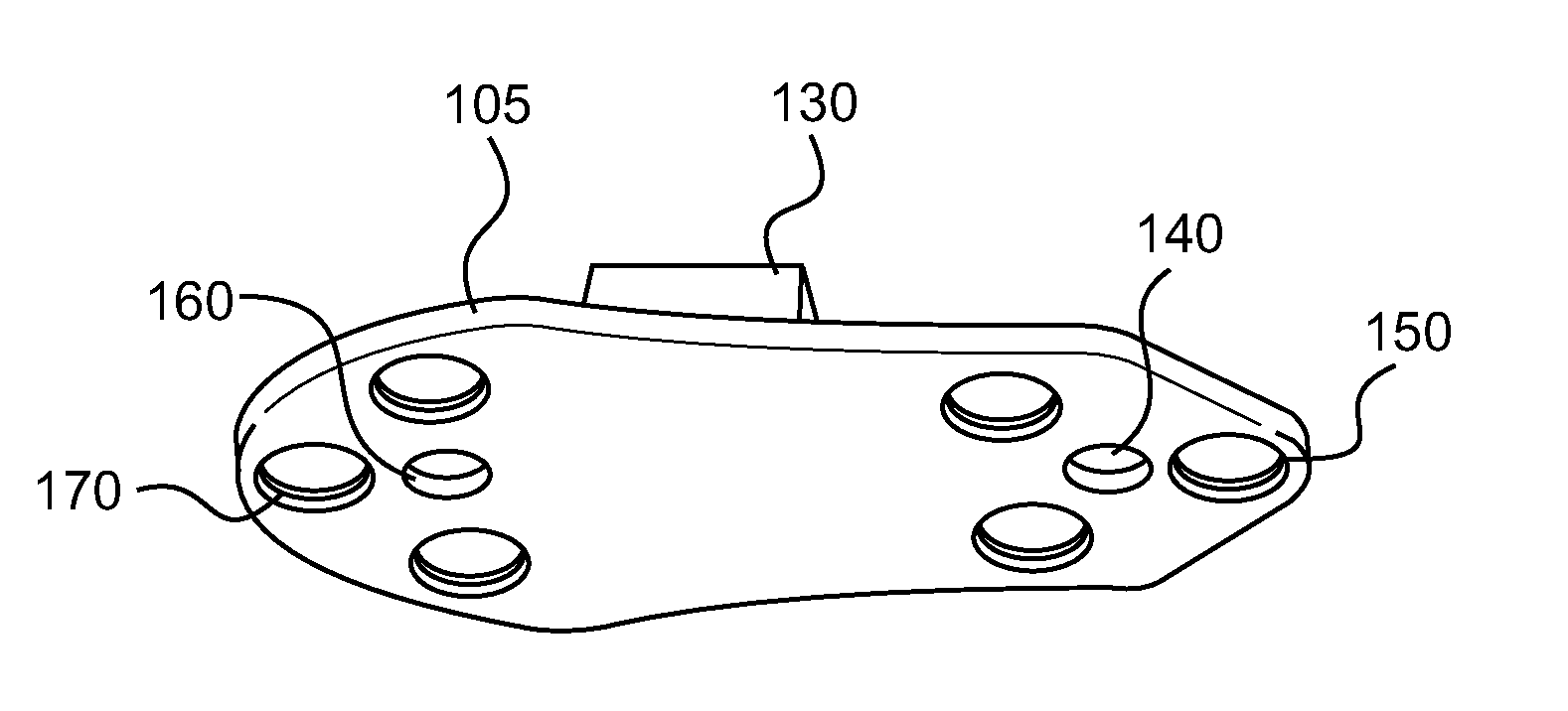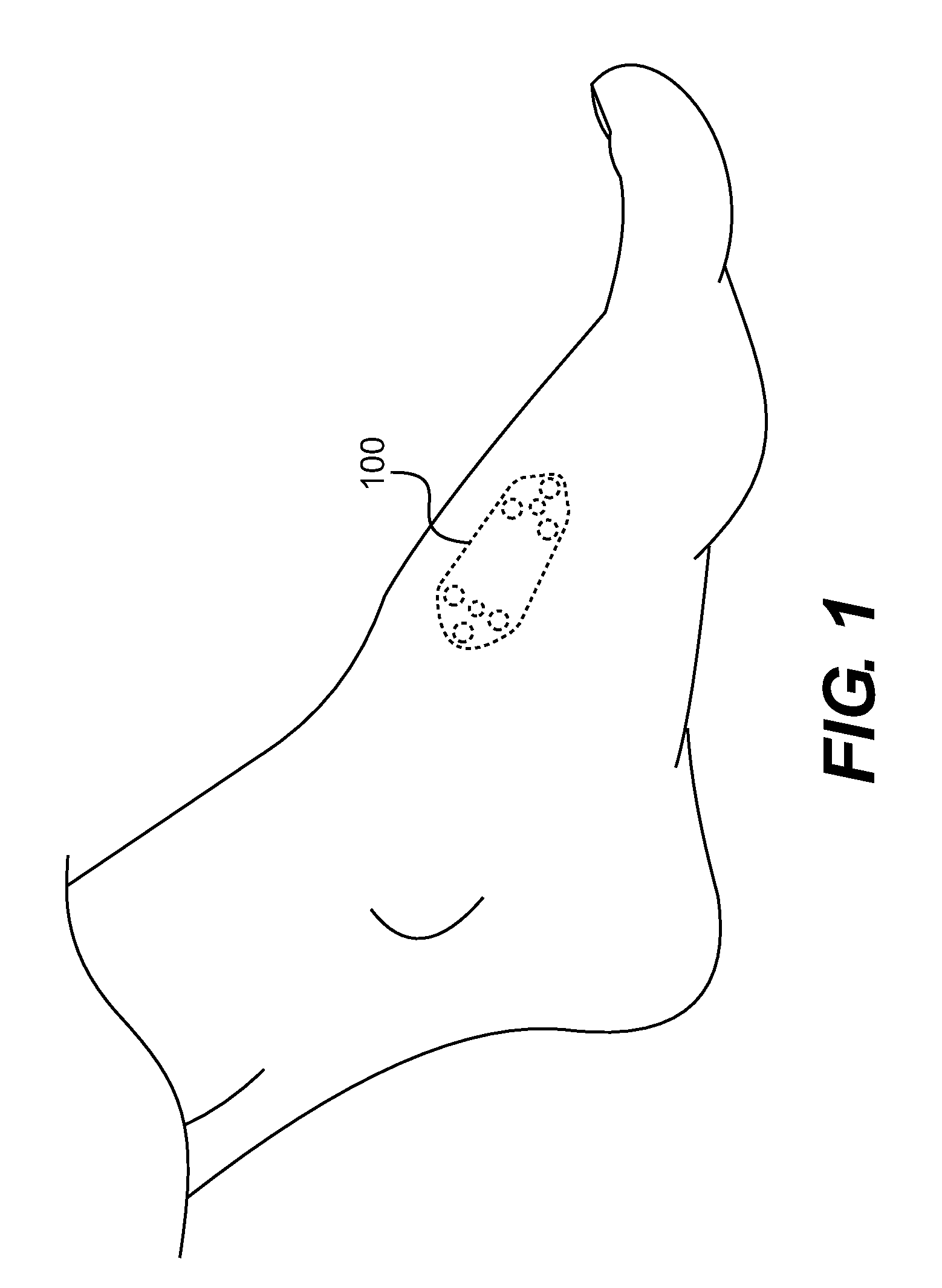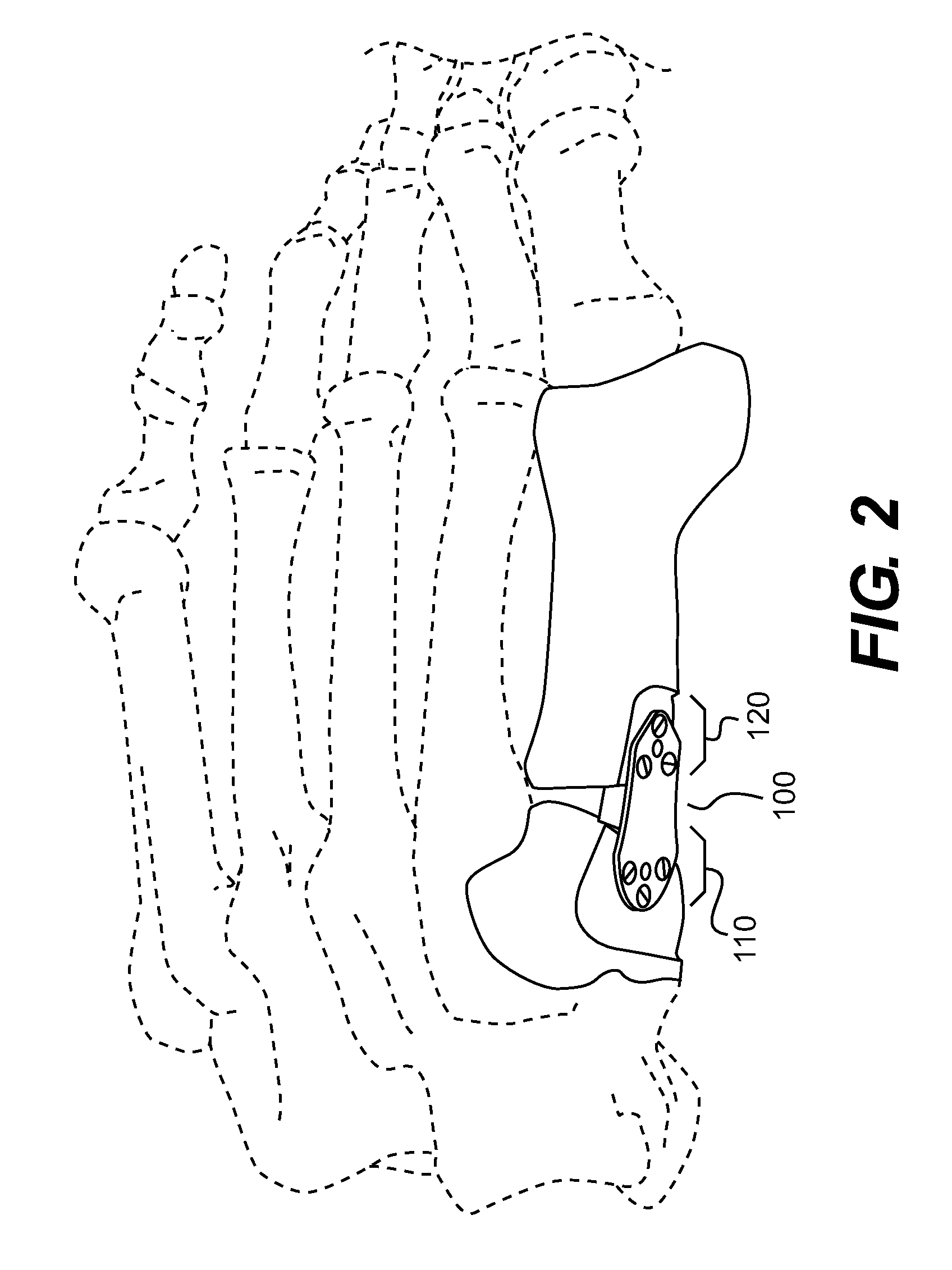Implant for correcting skeletal mechanics
a technology applied in the field of medical equipment for enhancing and correcting skeletal mechanics, can solve the problems of no longer being able to support the first metatarsal, excessive strain on the soft tissues supporting this bone, and stretching of the soft tissues
- Summary
- Abstract
- Description
- Claims
- Application Information
AI Technical Summary
Benefits of technology
Problems solved by technology
Method used
Image
Examples
Embodiment Construction
[0017]FIG. 1 illustrates a preferred location in which the subject implant for correcting skeletal mechanics 100 will be inserted. The implant 100 is placed at the inner, or medial, surface of a patient's foot over the metatarsocuneiform joint.
[0018]The device contains both a plate component 105 and a wedge component 130. See FIGS. 2-7 below. Turning to FIG. 2, the device is shown in place with the surrounding bone structure illustrated. The device is located such that the anterior portion of the plate is attached to a flush or flattened region on the side of the first metatarsal bone 120. The posterior portion is attached to a flush or flattened region on the side of the cuneiform bone 110. The wedge portion is inserted at least part way into the joint between these bones, the metatarsocuneiform joint.
[0019]FIGS. 3-7 show different detail views of a preferred implant. As stated above, the implant 100 is constructed with a plate component 105 and a wedge component 130. The wedge com...
PUM
 Login to View More
Login to View More Abstract
Description
Claims
Application Information
 Login to View More
Login to View More - R&D
- Intellectual Property
- Life Sciences
- Materials
- Tech Scout
- Unparalleled Data Quality
- Higher Quality Content
- 60% Fewer Hallucinations
Browse by: Latest US Patents, China's latest patents, Technical Efficacy Thesaurus, Application Domain, Technology Topic, Popular Technical Reports.
© 2025 PatSnap. All rights reserved.Legal|Privacy policy|Modern Slavery Act Transparency Statement|Sitemap|About US| Contact US: help@patsnap.com



